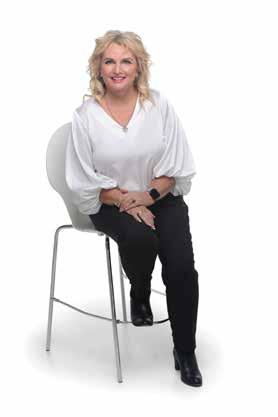
3 minute read
A Finances
“Ongoing” and “Outgoing”. Breaking down the transaction like this makes it much easier to see what you’re going to pay and when. If you’re comparing one payment option with another or perhaps two different villages, then you can draw a line down the middle of the page and look at them side by side.
So what goes in each box?
Advertisement
The Ingoing
This is the price you pay for your home and to use the common facilities – in a retirement village, your contract is often a leasehold or licence arrangement. In a land-lease community, your contract has two parts – you buy the home and have a lease over the land. If your new home is in a strata-title village, then the amount you are paying is to own the home and have use of the common facilities (often through an owner’s corporation).
All transaction costs should go into this column. For example, there may be legal or administration costs associated with having your contract drawn up or having your leasehold registered on the operator’s title. If it’s a strata-title village, then you may need to factor stamp duty into the ingoing costs (which doesn’t normally apply in land-lease communities or retirement villages that are not strata title).
In some communities, you’ll be given options for caravan or boat parking, additional car parks or storage cages. These should be added to the purchase price.
The Ongoing
Retirement village residents pay a weekly or monthly fee to cover the running of the village, often called a “general service charge”. This charge is similar to the costs of an owner’s corporation, where a budget of expenses is prepared, residents are able to have input, and the fees are levied on a cost recovery basis.
In a land-lease community, the ongoing fee is called a “site fee”, which is the price you pay to lease the land on which your home sits. Unlike in a retirement village, land-lease communities charge market prices, so they tend to be higher, but this is often offset by a lower or no deferred management fee (DMF) at the end.
In addition to the cost of the community you live in, you will still have your own personal expenses: groceries, clothing, utilities and ad hoc expenses like travel. If you get a homecare package, then you need to factor in those costs, too.
It’s a good idea, as a separate exercise, to create a budget. In your budget, include your personal expenses as well as the village costs together with your income. Make sure you adjust your investment income for any change to your investments (most people free up equity from their home when they downsize) and make sure you include any age pension and rent assistance entitlements based on your new financial position and how your contract is treated by Centrelink – these may be quite different to what you currently receive.
The Outgoing
The greatest confusion of retirement community costs is around the exit fee, the biggest part of which is normally called the “deferred management fee” or DMF.
The DMF is typically a percentage of either your purchase price or the next sale price: anything between 25 per cent and 40 per cent is common but anything between 0 per cent and 100 per cent is possible.
To calculate your exit fee, you may also need to factor in your share of any capital gain or capital loss with the operator and, like other property transactions, there can be costs associated with selling your home, such as renovations and marketing expenses as well as sales commissions.

Unlike most other property transactions, the amount you get back may be paid to you before your home sells under what is known as a “buyback”. This can be as short a period as three months or as long as 18 months. (Of course is there’s no buyback, you’ll receive your money when your home sells.)
Making it simpler


Working out these figures can be complicated, especially if you are trying to compare different contract options, different homes or different communities. At Aged Care Gurus, we have created a software program to help take the financial confusion out of crunching all the numbers: it’s called Village Guru.
It enables the village to provide you with a report showing the ingoing, ongoing and outgoing village costs, together with an estimate of your Age Pension and Rent Assistance entitlements and Home Care Package costs. It’s great information to have and can save you a lot of time and worry, but it is not financial advice. You should seek advice from a retirement living and agedcare specialist adviser to ensure you get the best outcome for you.
ACG www.simpatica.net.au
Rachel Lane is the principal of Aged Care Gurus, where she oversees a national network of specialist advisers. She writes regular columns on retirement living and aged care for The Sydney Morning Herald, The Age and The Brisbane Times, and makes frequent appearances on television and radio. Rachel has co-authored a number of books, including the best-selling Aged Care, Who Cares? and Downsizing Made Simple.
The team at Simpatica has assisted many families transitioning a loved one into quality care facilities by listening to, and understanding the needs of each individual client. We understand that this is often a di cult time, for not only the person in need of care but also their families both emotionally and psychologically, and how important it is to genuinely make a connection with your loved ones’ needs.
For assistance with everything care, call Simpatica today info@simpatica.net.au





